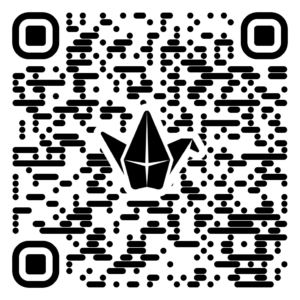February 1 :: Materials Science :: Slime Polymers
The Science of Slime: Polymers in Action
Slime is a non-Newtonian fluid, meaning it behaves as both a liquid and a solid depending on how you interact with it. The key ingredient, a polymer like glue, forms long chains of molecules that become tangled when mixed with an activator such as borax or contact lens solution. This cross-linking process changes the viscosity of the substance, giving slime its stretchy, gooey, and moldable properties!
Regular Slime Making Instructions:
- Watch the video: Start the activity by watching the short videos above about bioluminescence and magnetic bacteria. The videos also explain the science of bioluminescence and magnetotactic bacteria which we’ll use while making slime!
- Pour the base: Pour 6 oz (3/4 cup) of glue into a mixing bowl. Imagine this as the foundation for life, where simple building blocks come together.
- Add structure: Add 1/2 tablespoon of baking soda to the glue and stir well until fully mixed. Think of this as an essential ingredient that helps give the slime form, similar to how certain molecules played a role in early life’s structure.
- Introduce individuality: Add a few drops of food coloring or glow-in-the-dark powder to give the slime its unique “personality.” Stir until the color is evenly distributed. Reflect on how some organisms might have started to develop unique characteristics to adapt to their environment.
- Create movement: Add 1 1/2 tablespoons of contact solution to the mixture and stir until it starts to thicken and pull away from the sides of the bowl.
- Knead and refine: Use your hands to knead the slime until it becomes stretchy and less sticky. If it’s sticky, add small amounts of contact solution (a few drops at a time) and keep kneading.
- Add complexity: If desired, knead in iron dust for magnetic slime after the slime is fully formed. This represents how life became more complex over time, incorporating new elements to adapt and evolve.
- Analyze your slime: Once the slime is made, spend a few minutes playing with it. Stretch it, squish it, and observe its properties. Discuss with your group:
- What characteristics does your slime have that might relate to living organisms?
- How is it adaptable, flexible, and dynamic?
- Did you use multiple adaptations? Explain your your new type of adaptation.
Ready to Try Foam Slime?
- Add 1/2 Tablespoon of baking soda to the mixing bowl.
- Pour in 1/4 cup of water and stir gently until the baking soda dissolves.
- Add 2 cups of shaving cream to the bowl and gently fold it into the mixture with a spoon or spatula.
- Measure 1 1/2 tablespoons of contact solution, pour it into the bowl, and stir gently until the mixture starts to come together.
- Add a few drops of food coloring or glow-in-the-dark powder if you want, and stir until the color is even.
- Pour in 2/3 cup of white glue and stir until the mixture turns into a slime-like consistency.
- Knead the foam with your hands until it feels stretchy and less sticky. If it’s sticky, add a few drops of contact solution and keep kneading.
- Add extra items like iron dust (for magnetic foam) or foam beads (for texture) or even glow-in-the-dark powder if you want.
- Enjoy your foam lava! Squish, stretch, and shape it. Store it in an airtight container or bag when you’re done.
Regular Slime Recipe
Steps:
- Pour 3/4 cup glue
- Stir in 1/2 tablespoon baking soda
- Mix
- Add food coloring, glow-in-the-dark powder
- Pour 1 1/2 tablespoons contact solution
- Knead
- Add extras like magnetic powder, foam beads, etc.
Foam Slime Recipe
Steps:
- Add 1/4 cup of water
- Stir in 1/2 tablespoon baking soda
- Mix
- Squirt 2 cups of shaving cream
- Stir in 1 1/2 tablespoons contact solution
- Add food coloring, glow-in-the-dark powder
- Mix
- Pour 2/3 cup of white glue
- Knead
- Add extras like magnetic powder, foam beads, etc.

